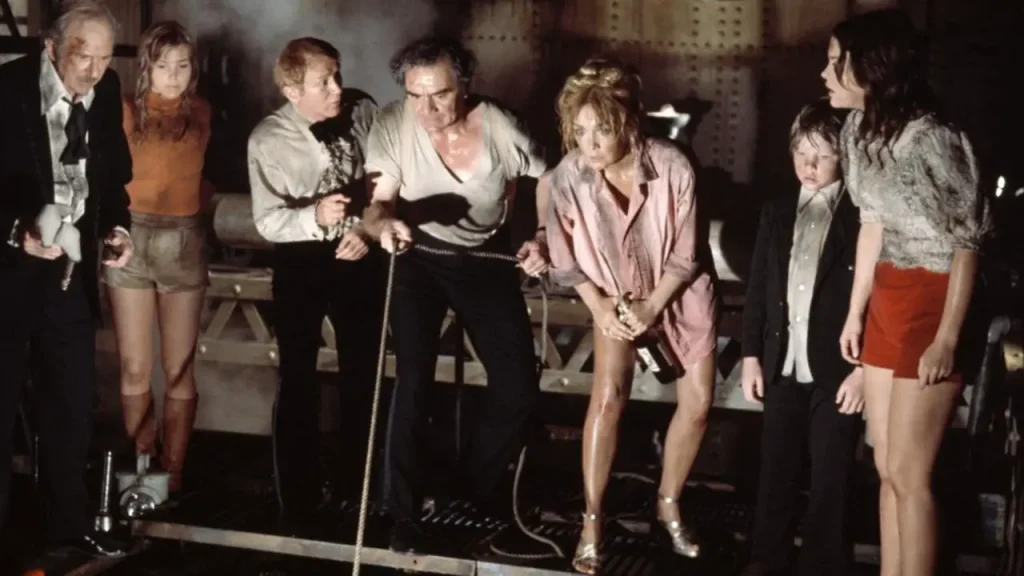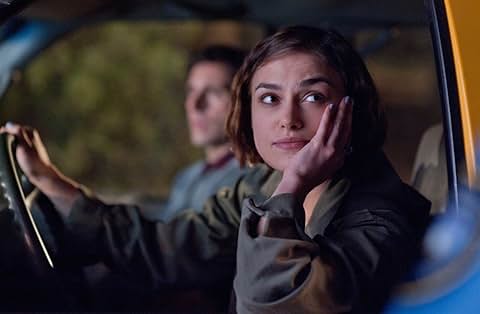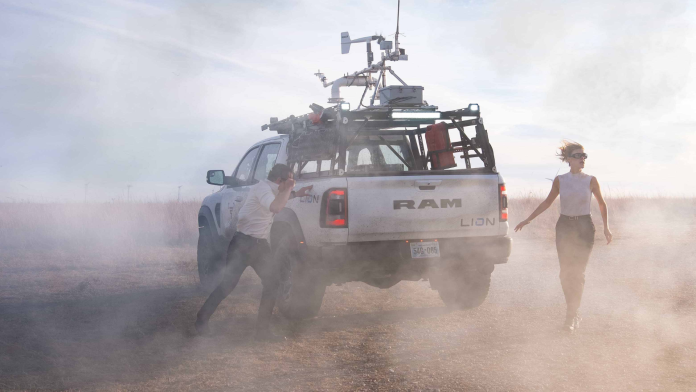We don’t just chase disaster films, we love ’em—and we’ve been glued since the early 1970s. Twisters, the raucous sequel to its similarly named predecessor Twister, has earned itself the title of biggest opening weekend ever for a disaster film, flaunting $80.5 million at the box office. But what does it have that other recent blockbusters in this genre don’t?
Twisters roared onto the cinema scene armed with compelling characters, a new storyline, and, most importantly, many a tornado. While the press tour certainly drummed up a lot of attention, Glen Powell’s Hollywood takeover—with his dog, Brisket, by his side—has also done its part. The film had to speak for itself once all this was done, though—and it did not disappoint, with many hailing it as the return of the disaster film. Some may wonder how a genre that has never let up could have a “return”, but there has been a markedly poor reception to this type of film in recent years. Twisters marks its resurgence, combining classic elements with modern sensibilities to create a perfect storm of entertainment.
Humble beginnings
The disaster film genre had its humble beginnings in the 1970s. The Poseidon Adventure, released in 1972, depicted a ship from New York to Greece overturned by a tidal wave. Only 10 survive and must find a way to escape. The film was both a critical success, receiving a Special Achievement Academy Award, and a commercial one, captivating audiences with its innovative use of special effects and suspenseful plot. Not long after was The Towering Inferno (1974), another audience-pleaser. Adapted from two novels, the film featured an array of big names, including Paul Newman, Steve McQueen, Faye Dunaway, and Fred Astaire. This was arguably where cinemagoers caught disaster fever; cinemas were flooded with the flicks from then on.

There was a steady stream of these films throughout the rest of the ‘70s and ‘80s, but they hit their stride in the 1990s. They became blockbusters, drawing in massive crowds thanks to their mass appeal. There aren’t many audiences disaster films don’t cater to, tending to mix in the vital ingredients of action, romance, horror, and even comedy. Cinemagoers were spoilt for choice with disaster flicks. Twister hit cinemas in 1996 to good reception, but it wasn’t alone. It was accompanied by Tornado!, Night of the Twisters, and Panic in the Skies that same year. While some were made for television, tornado fever had certainly hit Hollywood.
The influence of climate change
It’s difficult now to have a conversation without mention of the state of the Earth’s climate and its dramatic deterioration, but Hollywood has been having its say for a long time. 2004’s climate catastrophe The Day After Tomorrow had, until Twisters, the biggest opening weekend for a disaster film at the box office. Strangely enough, despite its many factual inaccuracies, studies have shown that The Day After Tomorrow has had a real-world influence on climate conversations.
Don’t Look Up, a political satire from 2019, is cut from the same cloth. Leonardo DiCaprio’s science professor and a young student, portrayed by Jennifer Lawrence, find a fast-approaching comet set to eradicate Earth. The pair must convince humanity of its threat, but this becomes impossible when they discover how inactive the government is and how crazily social media takes the news. It serves as a reminder that politicians aren’t moving quickly enough on the climate crisis and that this inactivity could destroy our world as we know it.

The challenge with climate change-influenced stories is that they weigh heavily on the mind. Audiences primarily watch disaster films for the terror, fun, and relief that they are not going through the experience being depicted. This could be why the disaster film has been less well-received in recent years. The genre could have started hitting too close to home for many, thus missing the core appeal, which lies in escapism and spectacle.
Marketing
In many cases, disaster films aren’t always foremost advertised as such. The Poseidon Adventure is, first and foremost, an adventure and thriller, for example, and Volcano (1997) can more broadly be described as an action film.

In 2012, along came a different kind of disaster film. Marketed as a romantic comedy, Seeking a Friend for the End of the World already felt like a sidestep from the usual formula. When an asteroid is on the verge of striking Earth, an insurance salesman decides to track down his first love. Starring the unlikely pairing of Steve Carell and Keira Knightley, the story is devastatingly poignant, all while hitting several comedic moments. It isn’t as rambunctiously loud as others in the same genre but has a quiet desperation about it, which is arguably more unsettling. The characters come to accept their fate, which feels a touch different to, for example, Armageddon (1998), where the crew fight to stop the end of the world by flying into space and to the world-destroying asteroid. Seeking a Friend for the End of the World is more subtle in its exploration of humanity’s powerlessness.
Missteps
It’s indisputable that some have missed the mark, but this is the case with any genre. Roland Emmerich’s 2012 took the myth of the world’s end that year and created a story that has gone down in history for all the wrong reasons. Aside from some questionable acting choices, the writing was misinformed and didn’t grip viewers in the way other disaster films had. Sharknado, which came out in 2013, is an even more glorified example of the lousy work that has come out of this genre. With a story that involves sharks being consumed by a tornado and a title to match, though, it’s clear what the film was intended to be.

The disaster film genre has weathered its fair share of storms, but oversaturation of anything can lead to generic and uninspired work. While the disaster film genre has undoubtedly produced some cinematic gems, it has also suffered from a deluge of mediocre entries. This overabundance has contributed to a sense of fatigue among audiences, making it increasingly difficult for filmmakers to stand out from the crowd. Twisters, however, has managed to revitalise the genre by offering a fresh perspective and a return to the core elements that made disaster films so captivating in the first place.
What sets Twisters apart
Twisters knows what it is, and though this seems a minimum requirement, it’s surprising how many get it wrong. Some take themselves too seriously, causing an audience to laugh at the film rather than with it. Others have too much fun and miss the point of the story altogether. Luckily, Twisters manages to nestle itself in a nice middle ground—knowing exactly when to reign itself in for the emotional moments. Powell and Edgar-Jones’s sizzling chemistry makes for a powerful on-screen presence, balanced by Anthony Ramos’s steely composure.
With its blend of thrilling action, relatable characters, and a nostalgic nod to the genre’s golden age, Twisters has managed to recapture the magic that once defined disaster films, taking the world by storm. By avoiding the pitfalls of self-seriousness or excessive silliness, it strikes a balance that resonates with audiences. As the film continues to dominate the box office, it’s clear that the appetite for well-crafted disaster cinema remains strong.
Words by Gemma Nettle
Support The Indiependent
We’re trying to raise £200 a month to help cover our operational costs. This includes our ‘Writer of the Month’ awards, where we recognise the amazing work produced by our contributor team. If you’ve enjoyed reading our site, we’d appreciate it if you could donate to The Indiependent. Whether you can give £1 or £10, you’d be making a huge difference to our small team.
